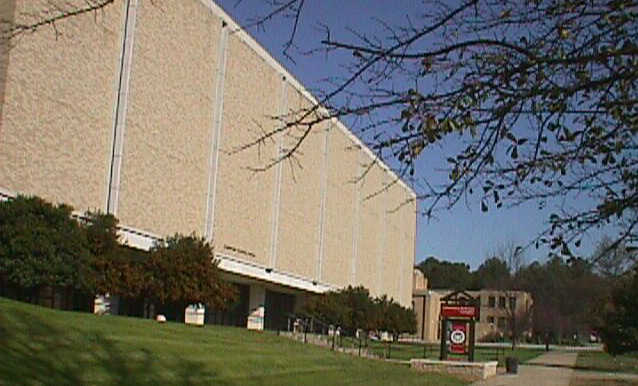
Department of Chemistry
and Physics
 |
Department of Chemistry and Physics |
| CHEM1023 |
Exam 6
|
SHOW WORK ON ALL PROBLEMS F = 96,500 J/Vmol
1. Define entropy. (4 points)
2. Define a spontaneous process and give an example. (4 points)
3. Using the table provided, calculate the Free Energy for the equation
below. Is the reaction spontaneous or nonspontaneous? (12 points)
CH 4 (g) + 3 Cl 2 (g) --------> CHCl 3 (g) + 3 HCl (g)
|
|
| CHCl 3 (g) -70.4 kJ/mol |
| CH 4 (g) -50.8 kJ/mol |
| Cl 2 (g) 0 kJ/mol |
| HCl (g) -95.3 kJ/mol |
4. Give the equation that relates DG o and K. If K c = 7.0 x 10 3, is the reaction spontaneous? (5 points)
5. State the three Laws of Thermodynamics. (9 points)
First -
Second -
Third -
6. Write the formula for the change in the Gibbs Free Energy related to enthalpy and entropy. For the reaction of A + B ------> C + D, if DS is positive and DH is negative, what is the sign of DG? What information can you say about this specific reaction based on the thermodynamic parameters (DS, DH, DG)? (10 points)
7. Predict whether the reaction has a positive or negative value
for DS. (6 points)
|
|
|
| a) N 2H 4 (l) + 2 H 2O 2 (l) ------> N 2 (g) + 4 H 2O (g) |
|
| b) Al(OH)3 (s) + 3 HCl (g) ------> 3 H 2O (l) + AlCl 3 (s) |
|
| c) 2 NaHCO 3 (s) ------> Na 2CO 3 (s) + CO 2 (g) + H 2O (l) |
|
8. Balance the following redox reaction: (8 points)
Cr 2O 7 - 2 + SO3 - 2 ---------> Cr + 3 + SO 4 - 2 (acid sol'n)
9. In a Galvanic Cell:
a) What is the salt bridge for?
b) At which electrode does the oxidation occur? _____________
c) For a spontaneous reaction, what is the sign (+ or -) for the cell potential? ________________ (6 points)
10. Write the cell diagram for the Cu+2/Cu and Cr+3/Cr half-cells and calculate the E o for the Cu+2/Cu and Cr+3/Cr half-cells. (16 points)
11. Determine the E for the Co+2/Co and Pb+2/Pb half-cells if the [Co+2] = 2.0 M and the [Pb+2] = 0. 50 M. (12 points)
12. Determine the DGo for the Co+2/Co and Pb+2/Pb half-cells. (8 points)